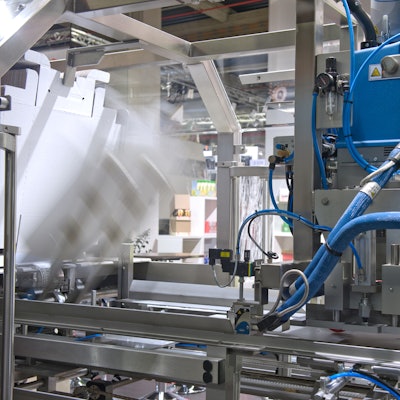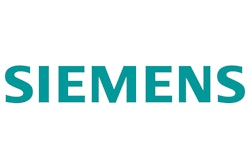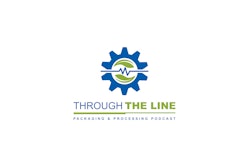Overall equipment effectiveness (OEE) is older than many of this magazine’s readers. Devised in the 1960s in Japan, it was one of the many manufacturing methodologies developed there in the post-war period in an effort to get more performance from existing assets. In recent years, though, it has been gaining increasing prominence in the U.S. The degree of implementation varies widely with different industries, but packaging is proving to be one of the industries most receptive to this methodology.
>> What is OEE? Click here for more information.
There is little in the way of hard data on this, but Niels Andersen, vice president of manufacturing business consulting for Invensys Operations Management (iom.invensys.com), says, “OEE seems to be the most commonly used non-financial performance measurement on packaging lines today.”
An obvious question, then, is why? What benefits are packagers receiving that would make OEE so attractive to them?
Cheaper than machines
Competitive pressures in the packaging industry continuously heighten the importance of getting more productivity and value out of existing assets, as do other factors, such as the need to meet increased demand. “If a factory needs to output more product to satisfy demand,” says Tom Jensen, program manager, OEM business development for Lenze Americas (www.lenzeamericas.com), “they can either expand their facility or improve the productivity of the existing production floor.”
If the needed productivity increase is less than 40 percent, Jensen says, the response can be procedural rather than material—that is, the implementation of a process improvement methodology like Six Sigma or Lean manufacturing, with OEE acting as an enabler through its ability to identify the areas in greatest need of improvement.
“Once OEE is established, it gives an indication of the factory’s performance, and then tools like Six Sigma can be used to drive improvements,” he says. “In fact, OEE provides the feedback that proves if the measures taken in a business improvement model are having an effect.”
For these reasons, Jensen says, the procedural approach makes good sense when the needed productivity increase is less than 40 percent. “A decent gain in productivity,” he notes, “costs a lot less than the capital needed for expansions and new equipment.”
He also sees another factor pushing OEE use: “The need for larger global companies to create consistent product worldwide at the same cost per unit has become a goal of many larger producers. Beyond profitability, this is about customer retention and brand/market protection.”
Invensys’ Andersen mentions other benefits of OEE that are often overlooked in cursory discussions of the methodology:
• Successful OEE implementation can lead to a reduction in production time, which reduces the number of hours that a production line is running, thereby reducing labor costs, especially costs for overtime.
• The increase in production yield reduces production waste and lost production cycles.
Too simple?
One of the most attractive things about OEE is its simplicity. Users don’t need advanced seminars to tell them that if a machine is scoring lower in one or more of the OEE components today than it did yesterday, then something is wrong. But the methodology’s simplicity can also be a drawback. For example, OEE is simple enough to be charted with just a clipboard and a pen, a practice seen in many packaging plants. But it’s a practice that, experts believe, keeps users from gaining full benefit from the methodology.
“Some packaging operations are still calculating and evaluating OEE after the fact,” says Mark Davidson, principal analyst, LNS Research (www.lnsresearch.com), Cambridge, Mass. These operations, he says, “are typically using a combination of automated and manual data collection fed into spreadsheets. This is the simplest way for organizations to start,” but it keeps them from doing root cause analysis and making needed changes in a timely fashion, he says. These systems also tend to be error-prone and often lack the ability to detect the micro-stops that often plague machines or production lines.
“OEE best practices,” Davidson continues, “measure and display OEE in real time to operators, along with supporting information that enables operations staff to understand root causes of OEE availability, line performance or quality issues.”
There are a variety of tools for achieving that end, Davidson notes. “Packaged real-time performance management software is in use by most of the larger operations, whereby there are highly visible performance displays out on the packaging floor which display actual OEE vs. targets.”
These displays are driven by human machine interface (HMI) software, OEE software or manufacturing execution system (MES) software that contains OEE functionality. “Some HMI software packages have sufficient calculation capabilities that they can be used to calculate and display top-level OEE information,” Davidson says.
OEE software packages can typically offer a significant amount of information on the causes of availability, line performance or quality variations—information that helps direct personnel to the trouble spot, Davidson says. “MES software that contains OEE functionality can add further dimensions of related production performance information in real time,” he adds, citing such examples as details of customer orders or product variations running on the lines, complete packaging scheduling visibility, and SPC/SQC quality analysis.
Real-time, automated data is needed to get the full benefit from OEE, agrees Mike Pantaleano, regional manager, information software, manufacturing intelligence for Rockwell Automation (www.rockwellautomation.com). His company’s answer to that need is FactoryTalk Metrics, a software tool that helps automatically collect and report OEE as well as other key performance indicator (KPI) data. It monitors plant-floor equipment, and provides information on current machinery performance, as well as detailed work cell/line/area/site historical data for long-term analysis. “This data is the basis for understanding the real causes of inefficiency, waste and lost capacity,” he says. “It also empowers plant personnel to make informed decisions around optimizing assets within a production facility or across a manufacturing enterprise.”
Siemens (www.siemens.com) offers Simatic IT, its MES, with OEE contained as a configurable function, says Daraius Battiwalla, market development manager, food and beverage for Siemens Australia.
“Food processors in Australia are facing very stiff competition from Asian imports,” he says. “They have to increase productivity and extract every bit of extra output they can get out of their assets.” Not surprisingly, he notes, use of OEE in packaging plants is widespread.
“Most companies,” he continues, “use OEE to not only monitor the performance of the packaging lines, but also to compare the performance of one line over another by measuring the OEE for each product they package on a particular line.” That way, he says, they can ascertain which lines perform better on certain products, and on particular product sizes. “They would only run the products on the lines that perform better with those products to get the maximum output from the fixed assets.” Those companies, he says, typically display OEE data in real time on plant-floor TV monitors.
Battiwalla stresses the importance of downtime monitoring (DTM) as part of any OEE application. DTM, he says, helps users identify possible causes of downtime, and “assign downtime not only to the operator and the machine, but also link it to the product being packaged on the line.”
Big Brother
Battiwalla is quick to caution, however, that “an OEE downtime monitoring system will fail if the operators see it as Big Brother watching them.” It is imperative, he says, to involve the operators early in the project and invite their input regarding the possible causes of downtime. “Management also has to show them that there is an advantage for them in increasing the OEE of the lines by giving them incentives to do so. Without the operators’ buy-in, even a well implemented system will fail as it will not be used.”
In terms of software developed specifically for OEE, as opposed to a broader package with OEE functionality, one recently released example is the Overall Equipment Effectiveness Measurement Tool developed by packaging equipment builder Ossid LLC (www.ossid.com) of Rocky Mount, N.C., for use on its 1500 series of weigh price labelers and CS100 In Motion case scales. The tool automatically acquires real-time production data and generates reports on the three major OEE parameters—availability, performance and quality—and can perform a variety of analyses on the data.
The Hidden Factory
“Manufacturers typically think they know what’s causing inefficiencies in their process,” says Mike Alyounes, weigh price product manager for Ossid, “but when you actually measure the process, you realize there are factors you didn’t even think to look at.”
Such was the case recently for an Ossid customer whose machines were racking up sub-par production rates. “The customer reported their machines were producing only 25-28 trays a minute on average across a whole shift,” Alyounes relates. “After we installed the OEE tool and performed our studies, we were able to determine that the downtime was a result of the customer’s lengthy manual QC process.”
Ossid worked with the customer to devise ways to trim some time off the process without compromising quality. For example, with each changeover, an operator would take a label of the new product and compare it with a specification sheet. Once the new product label had been approved, the operator would then begin production. Ossid helped the customer automate this inspection process. Today, the operator simply calls up the new label and specification information on a screen and performs an inspection routine at the machine.
“Now,” Alyounes says, “with the aid of solutions we were able to help the customer devise, they have gone from 20 to 28 trays a minute to 46.”
Effective Use
Clearly, OEE, if used properly, can be a powerful tool for identifying problem areas. The key phrase here is “if used properly.” Experts agree that it often isn’t. Improper use typically comes in two forms: ineffective data collection (e.g., cumbersome and time-consuming manual systems), or resistance by operators and/or management.
“Just about any tool that makes plant-floor jobs easier is worth it,” notes Leo Petrokonis, OEM packaging business development manager for Rockwell Automation. “However, machinery operators need to believe in the numbers to trust the data and feel confident making production decisions based on it. Using OEE as a consistent standard KPI across an organization that understands the measurement helps instill confidence among operators because they know the entire organization is working from the same measurement tool.”
Having the entire organization behind the tool is crucial. It tells operators (and supervisors) that use of OEE is an important part of the overall corporate culture, and not simply a stick with which to beat plant floor personnel over the head. That sort of atmosphere invites fudging of data or outright neglect of the process.
“As Peter Drucker put it, ‘Culture eats strategy for breakfast.’ Adoption and buy-in are all about culture and change management,” says Andersen of Invensys. “We have seen production managers remove OEE solutions because they did not want such corporate exposure. Methodologies like OEE will not likely be adopted correctly in organizations where bad performance is seen as an opportunity to blame someone. The organization must see bad performance as an opportunity to improve."


























